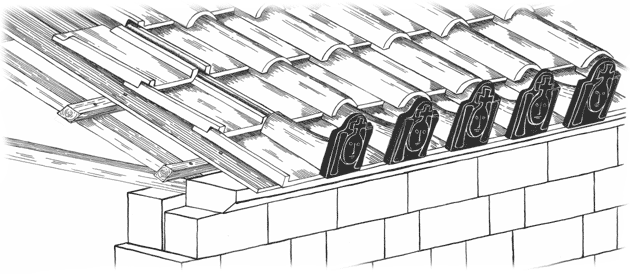- Home
- The town and the abbey
- The site from its origins
- Early history
- Les antefixes
Throughout the Early Middle Ages, the roofs of the churches at Saint-Denis were Roman in appearance; from this, one may suppose that the production of roof tiles-flat tegulae with their flanged sides and tubular-shaped imbrices-continued throughout the first thousand years of our era.
Reconstructed view of a roof built of flat tiles (tegulae) and curved tiles (imbrices), together with antefixes. © UASD / M. Wyss.
Fragments of terracotta antefixes, 5th-6th centuries.
© UASD / E. Jacquot.
The antefix - a sort of square plate topped by a semicircular pediment - is closely connected with this type of roofing. They were placed at the roof's lower edge and formed the end of a line of imbrices. Their surfaces often show signs of wear from the weather.
About twenty antefixes have been found at Saint-Denis. The oldest are from archaeological contexts that can be dated to the fifth and sixth centuries. All were created using moulds, which were probably made of wood. They depict a human mask topped by a flared cross and flanked by two small columns.
Following to a Roman tradition, these antefixes may have had an apotropaic, function, protecting the church from all kinds of attack.


